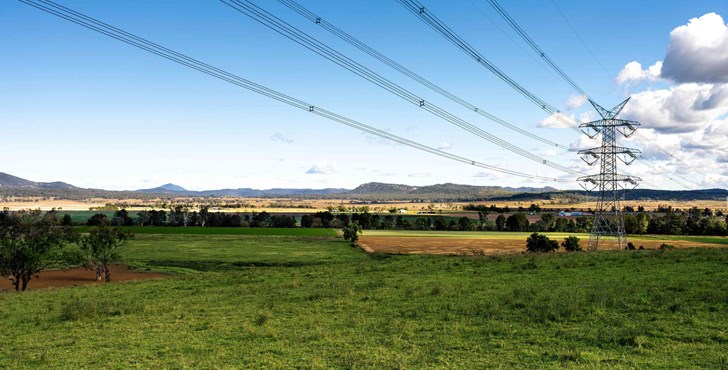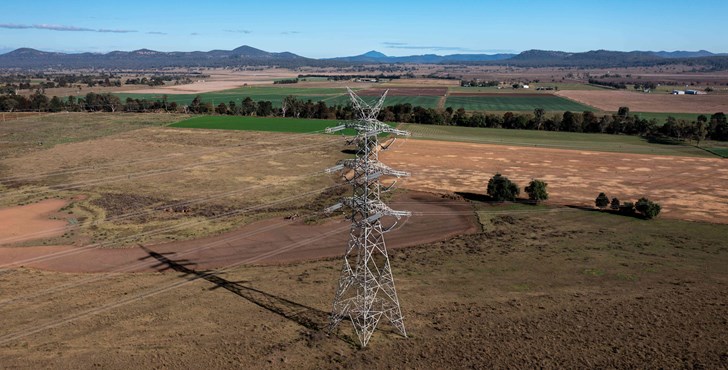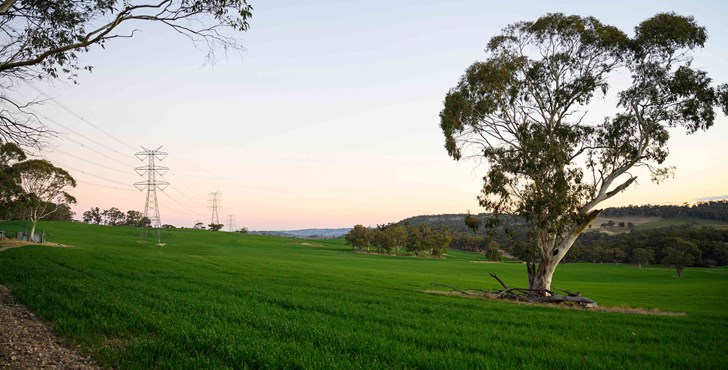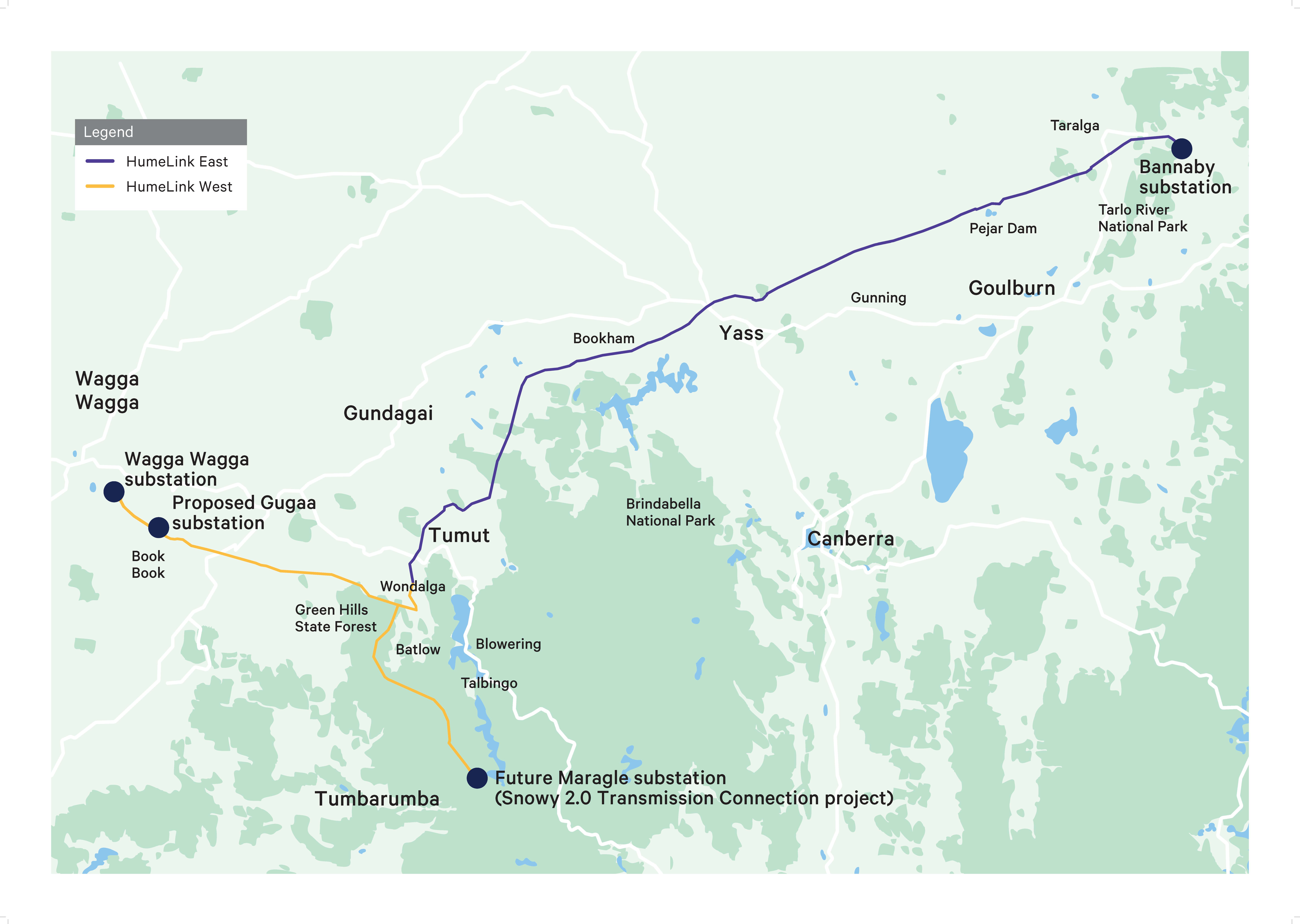Regulatory process
Federal and state government regulations require all major infrastructure projects, such as HumeLink, to undergo a robust environmental assessment before they are considered for approval.
On 11 February 2022, Transgrid submitted a Scoping Report for HumeLink to the Department of Planning, Housing and Infrastructure (DPHI) – formerly known as DPE. The report present a preliminary assessment of the potential impacts from the project. These were further assessed as part of the Environmental Impact Statement (EIS).
DPHI reviewed the Scoping Report and on 15 March 2022 issued the Planning Secretary’s Environmental Assessment Requirements (SEARs). The SEARs sets out issues that must be addressed in the EIS.
All Critical State Significant Infrastructure development applications must be accompanied by an Environmental Impact Statement (EIS). The purpose of an EIS is to identify and assess the potential environmental, economic and social impacts of the project to help government agencies, relevant authorities, community and stakeholders make an informed decision or provide an informed submission on the merits of the project.
The Department of Climate Change, Energy, the Environment and Water (DCCEEW) – formerly Department of Agriculture, Water and Environment (DAWE) – is also examining potential impacts of the project for Matters of National Environmental Significance (MNES).
To read the documents submitted to DPHI as part of the project’s EIS as well as the formal submissions, visit the NSW Major Projects Planning Portal.
Rit-t process and submissions
As part of the regulatory approval process, Transgrid was required to demonstrate HumeLink’s benefits to consumers using a three-part market benefits test. This Regulatory Investment Test – Transmission (RIT-T) is the public economic cost benefit test administered by the Australian Energy Regulator (AER) on all projects of more than $6 million. The documents include:
Project Specification Conclusions Report (PSCR) - detailed the need to reinforce the transmission network in southern NSW to increase capacity to the state's demand centres and describes credible options to meet the need, including technical characteristics that would be required of a non-network option.
Project Assessment Draft Report (PADR) - a full quantitative analysis of the proposed options and expected market benefit across a range of scenarios and sensitivities, published as supporting documents.
Project Assessment Conclusions Report (PACR) - addresses PADR consultation responses and determines the final preferred option.
Project Assessment Conclusions Report (PACR) Addendum - this addendum has been prepared in response to the AER's dispute determination and extends the analysis presented in the HumeLink PACR published in July 2021.
Environmental approvals
The NSW Environmental Planning and Assessment Act 1979 (EP&A Act) and Environmental Planning and Assessment Regulation 2021 (EP&A Regulation) form the statutory framework for environmental assessment and planning approval in NSW.
As part of the planning approval process for HumeLink, the project is required to prepare an EIS in accordance with the Planning Secretary’s environmental assessment requirements (SEARs).
This project also requires a Commonwealth Government approval as the DCCEEW has determined it is a controlled action under the Environment Protection and Biodiversity Conservation Act 1999 (EPBC Act).
Under a bilateral agreement between the State and Commonwealth, the EIS will satisfy the assessment requirement of both authorities. However, HumeLink will need environmental approval from the NSW and Commonwealth governments.
On August 30, 2023 the EIS was lodged to the Department of Planning, Housing and Infrastructure (DPHI) formerly known as DPE, and placed on public exhibition. The EIS public exhibition commenced 30 August 2023 and concluded Tuesday 10 October, 2023.
The project team is continuing to review and respond to submissions received on the EIS via the Submissions Report and assess and report on proposed project amendments and refinements via the Amendment Report. The amendments and refinements have been identified in response to issues raised in submissions and ongoing design refinements. As the project progresses through regulatory requirements, the team continues to actively engage with communities, stakeholders and government agencies. Engagement will continue throughout the preparation of the Amendment Report and in the lead-up to construction and operation of HumeLink.
The Submissions Report and Amendment Report will cross-reference one another and should be read in conjunction. The documents will be submitted to the DPHI during Q2 2024 concurrently and made available on the DPHI Major Projects Planning Portal.
The DPHI will review the EIS, Submissions Report and Amendment Report as part of the project assessment. The DPHI will then make a recommendation to the Minister for Planning and Public Spaces to either approve the project along with any conditions or provide reasons for refusal. The DPHI may request additional information from Transgrid as part of the project assessment.
If planning approval from State and Commonwealth governments is granted in the second half of 2024 site establishment and early works for the project will begin in late 2024. Construction work on transmission lines and substations would begin in 2025 with construction completed in 2026.
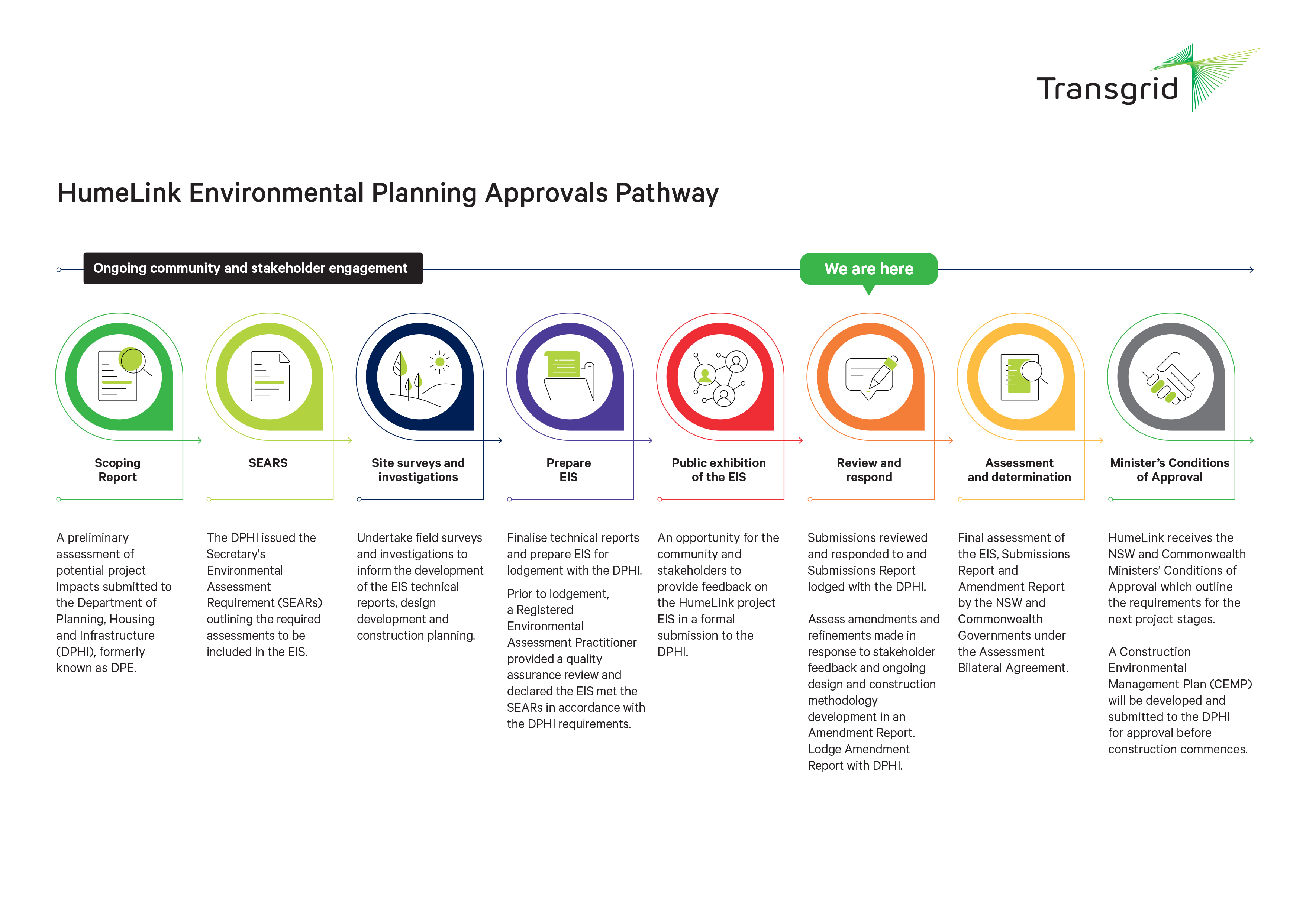
Read the Frequently Asked Questions below for more information on the Environmental approvals:
